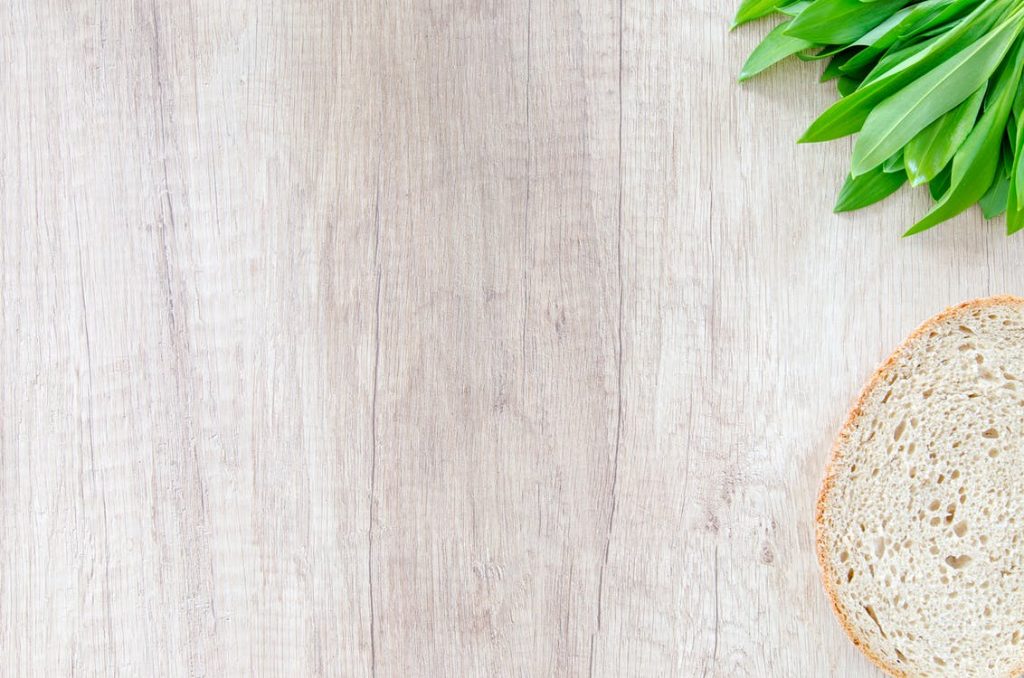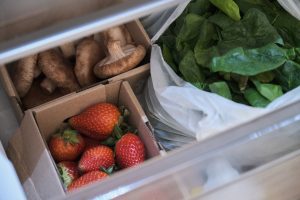In a previous sensory blog post (Sensory analysis of food for quality control and assurance applications – A review of ASTM MNL14 standard), we identified the necessary steps to the creation of a robust food sensory evaluation program as part of a Quality Management System (QMS). This subsequent post is intended to complement the previous article and targets the sensory evaluation of foods with complex sensory properties, such as Identity Preserved Products. The review is based on three European research articles that describe examples of sensory methodologies applicable to Product of Designated Origin (PDO). 1, 2, 3 Identity Preserved Foods with specific sensory characteristics must not only appeal to customers but must also remain true to their typical sensory profile. Traditionally, such products have been evaluated by food experts but evaluations have rarely been panel-based, controlled and validated.1 The case studies illustrate the development of sensory methods applicable to Spanish PDO cheese and red and white PDO wine toward quality certification. In the context of a food sensory evaluation program for Quality Assurance/Control, elements of the featured studies, specifically the use of decision trees to link quality scores to product defects and positive attributes, may supplement existing methodologies by providing more detailed Acceptance/Rejection criteria to show conformance to specifications.
Overview
In the featured articles, the authors argue that Quantitative Descriptive Analysis (QDA) and Preference Mapping methodologies present limitations for the quality assessment of premium quality food products, particularly PDOs. The researchers present an alternative method, a cross between the Flavour Profile Method and QDA where the use of a simple categorical rating scale, list of attributes and decision diagrams are employed systematically toward the determination of quality ratings by trained food experts. The product-specific methods generate more detailed sensory profiles than general quality evaluation methods and take into account positive sensory characteristics as well as defects. The training of expert panelists using sensory references, the ongoing qualification of these experts, the validation of the sensory method and its constant review as part of quality management activities make it scientifically valid.
Sensory panel training
Similarly to the QDA method, panelists must be trained and qualified to join the sensory panel. The typical screening of panelists includes basic sensory tests to confirm good visual, olfactory and taste acuity. These tests are used to validate that panelists are able to differentiate between samples and also able to recognise and rank one or multiple sensory attributes. Examples of methods include discrimination tests such as duo-trio, paired comparisons or R-index tests where panelists must match a sample to a control or differentiate between two samples. Other discrimination tests include triangular tests where panelists are presented with three samples (two are the same, one is different) and must tell the odd sample. Ranking and scaling tests may also be used. Care must be taken to select or prepare samples or sensory references whose sensory characteristics will be detected by the panelists. It is advisable to review the accepted sensory thresholds for the sapid substances of interest prior to conducting the tests. When working with beverages, product may be diluted with water or with another neutral product to create nuances in flavour and taste. Test samples may be prepared with various food-grade compounds to alter the profile of the sample and mimic taste unbalance. Amongst tools used for visual acuity testing are colour charts.1 The USDA colour charts, the egg yolk colour chart, the SRM beer colour scale or WEST “Winefan” approved colour system for wine are examples of charts that may be employed. If required, the sensory panel may also be trained and tested on standardised texture scales.
In order to demonstrate the proficiency of the panelists, performance on sensory tests must be quantified. In the cited examples, panelists were qualified if they achieved a 75% passing grade on all the required tests. Panelists achieving a 60% grade were allowed to repeat the assessment.
Defining the sensory space
Once the panel is recruited and qualified, the product evaluation may start. The sensory space must first be defined by determining the extent of the product sensory variability. The sensory space may include freshly-made products, products nearing the end of their shelf-life and products presenting flaws or defects. Depending on the type of food or beverage, the sensory profile may be strongly influenced by raw materials, manufacturing process, shelf-life and storage practices. The authors suggest that a literature review be conducted to identify specific attributes associated with the product. Where appropriate, competitors’ products may also be included. When assessing samples, panelists are advised to first describe the degree of difference between two products presented in a pair. Once a list of attributes is generated, the panel may assess groups of products together and refer to the list of descriptors for guidance. They can then validate the descriptors chosen from consensus against prepared sensory references.1 This last step will require multiple training sessions aimed at aligning judges on the sensory perceptions that closely match that exhibited by the products.
Defining key attributes and defects
The panel must then determine by consensus the key sensory attributes that characterise the ideal product and differentiate them from non-appropriate attributes. The panel must therefore answer the following questions: “Does this parameter really influence the sensory quality of the (product)? Does this parameter differentiate between the (products)?” The most commonly encountered defects/flaws will be retained as well as non-appropriate descriptors.
In the three case studies, the evaluations resulted in 5 descriptor categories. The products were assessed for Appearance, Odour, Flavour, Texture (mouthfeel) and Aftertaste. The PDO cheese was assessed for Appearance (Shape, Rind, Paste colour, Holes), Odour, Flavour, Aftertaste and Texture.1 The PDO wines were evaluated for Odour Intensity and Complexity, Aroma Intensity and Complexity. Key aroma and flavour attributes included Ripe Fruit, Licorice and Floral for red wine and Citrus Fruit, White Fruit and Herbaceous for white wine. Balance and Body, Global Persistence and Appearance (white wine) and Color Hue/Colour Intensity (red wine) were also included in the list. 2,3 A 5-or 7-point categorical scale was used with the top score representing “full compliance” which corresponded to the ideal, defect-free product, while the zero anchor represented “no compliance.” The evaluations were primarily qualitative: the absence or presence of a typical attribute and/or defect was correlated to a quality score on the scale. “Global Persistence”, on the other hand, was measured by counting, in seconds, the lingering sensation in the mouth. As for determining the intensity of aroma and flavour, it was achieved by using a mid-scale sensory reference that represented a rating of 4 out of 7 on the scale and that would be provided to the panel during an assessment.
In order to “objectivise” the product score, the panel is asked the following question: “What are the characteristics that define the ideal [top scoring product]?” Decision trees are created to link the qualitative attributes to a scale rating. For example, the decision diagram for PDO cheese identifies whether the product is free of defects (quality score of 4 out of 7 or higher) or exhibiting slight (3 out of 7), medium (2 out of 7) or serious defects (1 out of 7). If the product is fault-free, all key qualitative attributes are identified and categorised as “appropriate” (optimum score of 7 out of 7), “inappropriate or one absent” (score of 6 out of 7), “inappropriate and various absent” (score of 5 out of 7) and “majority absent/inappropriate” (score of 4 out of 7).1 For wine, the panel determined by consensus that “Balance and Body” were to be assessed concurrently and scored in a similar fashion. The number of imbalance causes and body characteristics were identified and categorised (score of 3 out of 7 for “slight and medium/low body”, 2 out of 7 for “quite imbalanced” and 1 out of 7 for “completely imbalanced”). If the wine was balanced and showed very high body, the ideal characteristic was reached and the wine scored the maximum score of 7. “High body and balanced” qualified the product for a 6 out of 7 rating and “medium body and balanced” yielded a score of 5 out of 7.2,3
Development of Standard Operating Procedure (SOP) and Score Card
The standard operating procedure is a document that identifies how the assessment is conducted and lists materials and sensory method, the assessment steps in sequential order and how the data is to be analysed and reported. The number of assessors may vary depending on the complexity of the product and the acuity of the judges. Experts report that few panelists are required if they are well trained(the cheese panel counted 7 trained panelists).1 The procedure will identify the controlled conditions in which the products are tested: number of products assessed in one session, product temperature, sensory room temperature and humidity, assessment in darkness or using dark glasses or evaluation under white light. Decision diagrams, sensory standards and score cards are referenced in the procedure which constitutes the panelists’ training manual.
Other decisions made by the sensory panel on the methodology concern the qualification and importance of descriptors for the overall quality rating. In the white wine example, two thirds of panelists were required to report an attribute, defect or cause of imbalance for it to be considered present in the wine. Attributes were also assigned a weight in order to calculate an overall quality score. With regards to the data analysis, individual panelist scores that were +/- 1.5 units (5-point scale) to 2 units (7-point scale) from the overall score mean for a given parameter were considered outliers and were removed from the data set. The attribute means and overall quality scores were then re-calculated. A Rejection/Acceptance score for overall quality would then need to be determined based on internal or customer quality standards.
Sensory references
As with QDA, specific product references are created in order to train panelists on aroma, flavour, texture and defect recognition and to assist with scoring. Sensory standards are reformulated as panelists reach consensus on whether the references constitute a good match for the attributes perceived in the product. References must be reproducible in order for the methodology to be objective and training of panelists effective. A good practice is to freeze references so that the same samples may be defrosted and readily available throughout the training process and sensory analysis. For the preparation of references, it is recommended to use fresh ingredients or recognised branded products to ensure consistency. Detailed instructions are also important for reproducibility.
Validation of method
Once the food sensory procedure and the score card are established and the panel qualified and trained, the methodology must be validated. A validation exercise consists of the panel assessing a few products within the sensory space. Assessments are performed in triplicate. The performance of the panel and that of the individual judges is determined. For trained panels, Lawless and Heymann 4 report a standard deviation around 10% of the scale range. The spread of scores may be higher for more difficult attributes such as aroma and odour intensity. Once an acceptable target for performance is established, the panel is given a number of defective, typical and non-typical products to assess. The evaluation results must confirm that the methodology returns an adequate quality measurement. The authors of the case studies provide various metrics to calculate and track the panel and individual panelist’s discriminating capacity, repeatability (agreement between judges) and reproducibility.1 In a typical QDA experiment, the panelists’ scores are analysed using an Analysis of Variance (ANOVA) model. F-ratios for main effects (Samples, Judges, Replications) and F-ratios for interaction effects are reviewed to ensure that panelists are discriminant, in agreement and consistent across replications.5
Graphical outputs
The sensory information from score cards may be graphed to summarise the assessed products’ sensory profiles. Spider diagrams and histograms may be used to display qualitative and quantitative information such as the number of reported and qualified attributes or overall quality scores.
References
3. Etaio, I., Gil, P. F., Ojeda, M., Albisu, M., Salmerón, J., & Pérez Elortondo, F. J. (2011; 2012). Improvement of sensory quality control in PDO products: An example with txakoli white wine from bizkaia. Food Quality and Preference, 23(2), 13.
4. Lawless, H. T., & Heymann, H., (2010). Sensory Evaluation of Food: Principles and Practices. Retrieved from http://www.library.ubc.ca/
5. Guinard, J.X. (2006). Sensory evaluation methods: descriptive analysis.





